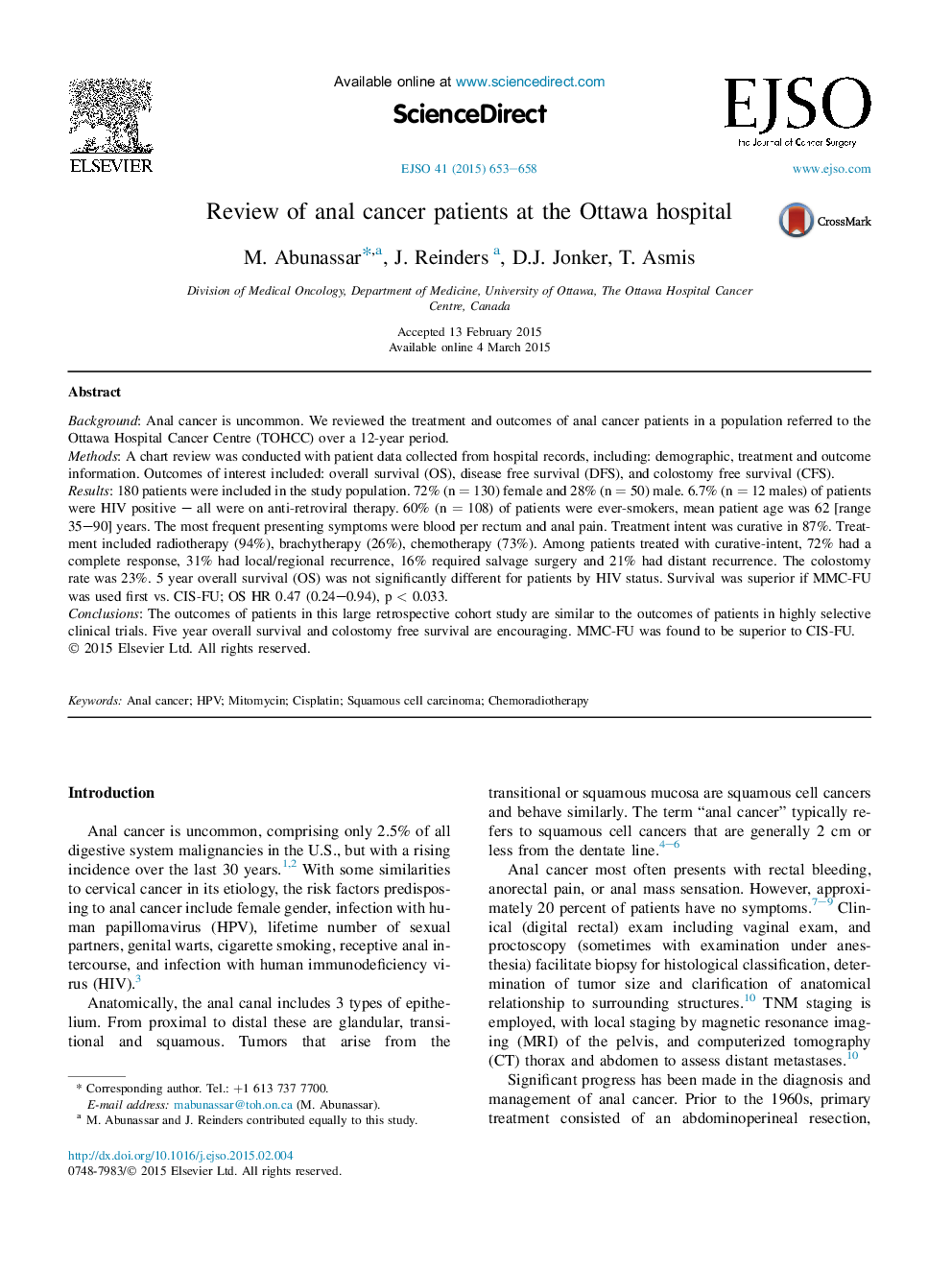| Article ID | Journal | Published Year | Pages | File Type |
|---|---|---|---|---|
| 3984752 | European Journal of Surgical Oncology (EJSO) | 2015 | 6 Pages |
BackgroundAnal cancer is uncommon. We reviewed the treatment and outcomes of anal cancer patients in a population referred to the Ottawa Hospital Cancer Centre (TOHCC) over a 12-year period.MethodsA chart review was conducted with patient data collected from hospital records, including: demographic, treatment and outcome information. Outcomes of interest included: overall survival (OS), disease free survival (DFS), and colostomy free survival (CFS).Results180 patients were included in the study population. 72% (n = 130) female and 28% (n = 50) male. 6.7% (n = 12 males) of patients were HIV positive – all were on anti-retroviral therapy. 60% (n = 108) of patients were ever-smokers, mean patient age was 62 [range 35–90] years. The most frequent presenting symptoms were blood per rectum and anal pain. Treatment intent was curative in 87%. Treatment included radiotherapy (94%), brachytherapy (26%), chemotherapy (73%). Among patients treated with curative-intent, 72% had a complete response, 31% had local/regional recurrence, 16% required salvage surgery and 21% had distant recurrence. The colostomy rate was 23%. 5 year overall survival (OS) was not significantly different for patients by HIV status. Survival was superior if MMC-FU was used first vs. CIS-FU; OS HR 0.47 (0.24–0.94), p < 0.033.ConclusionsThe outcomes of patients in this large retrospective cohort study are similar to the outcomes of patients in highly selective clinical trials. Five year overall survival and colostomy free survival are encouraging. MMC-FU was found to be superior to CIS-FU.
